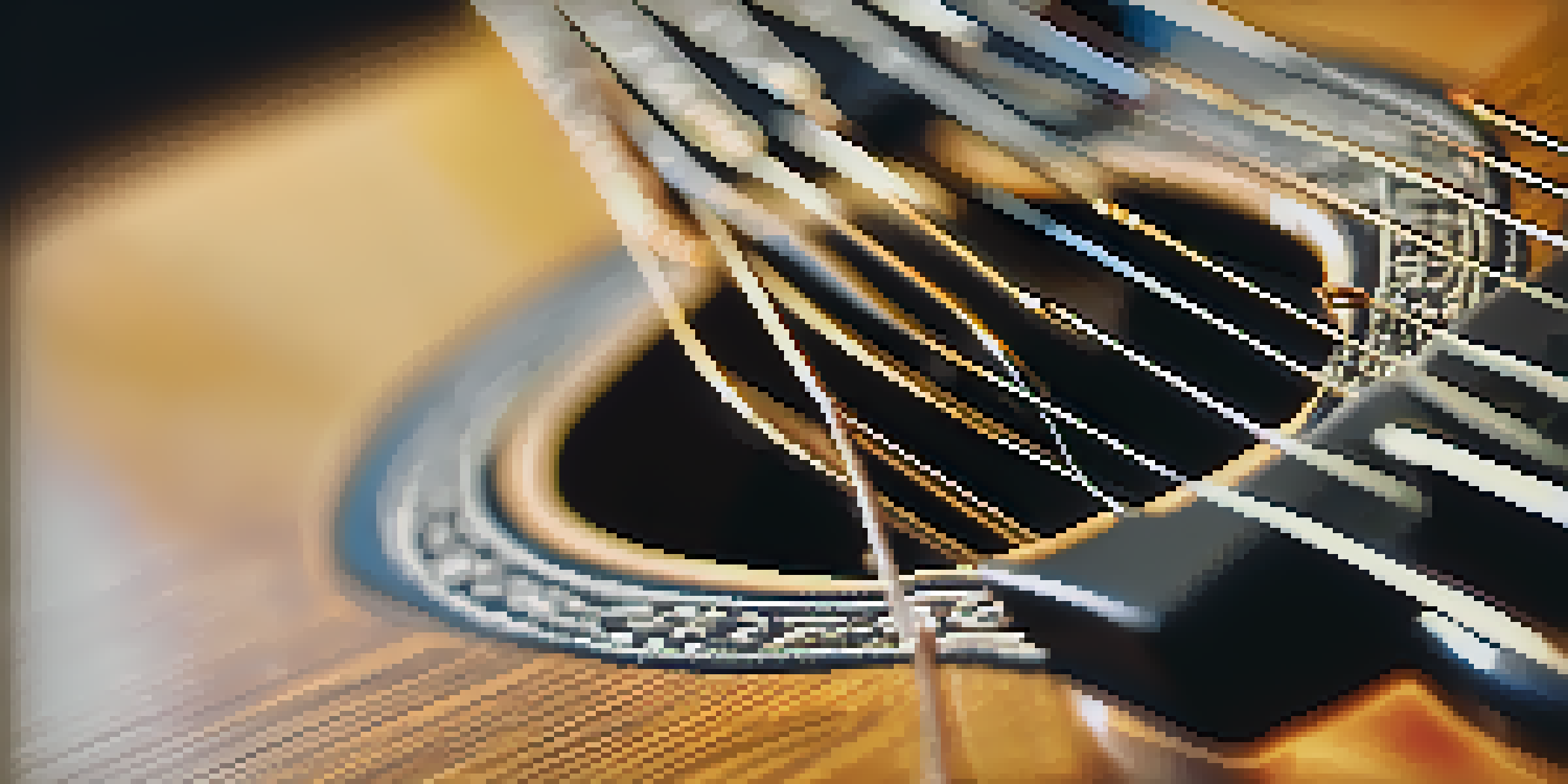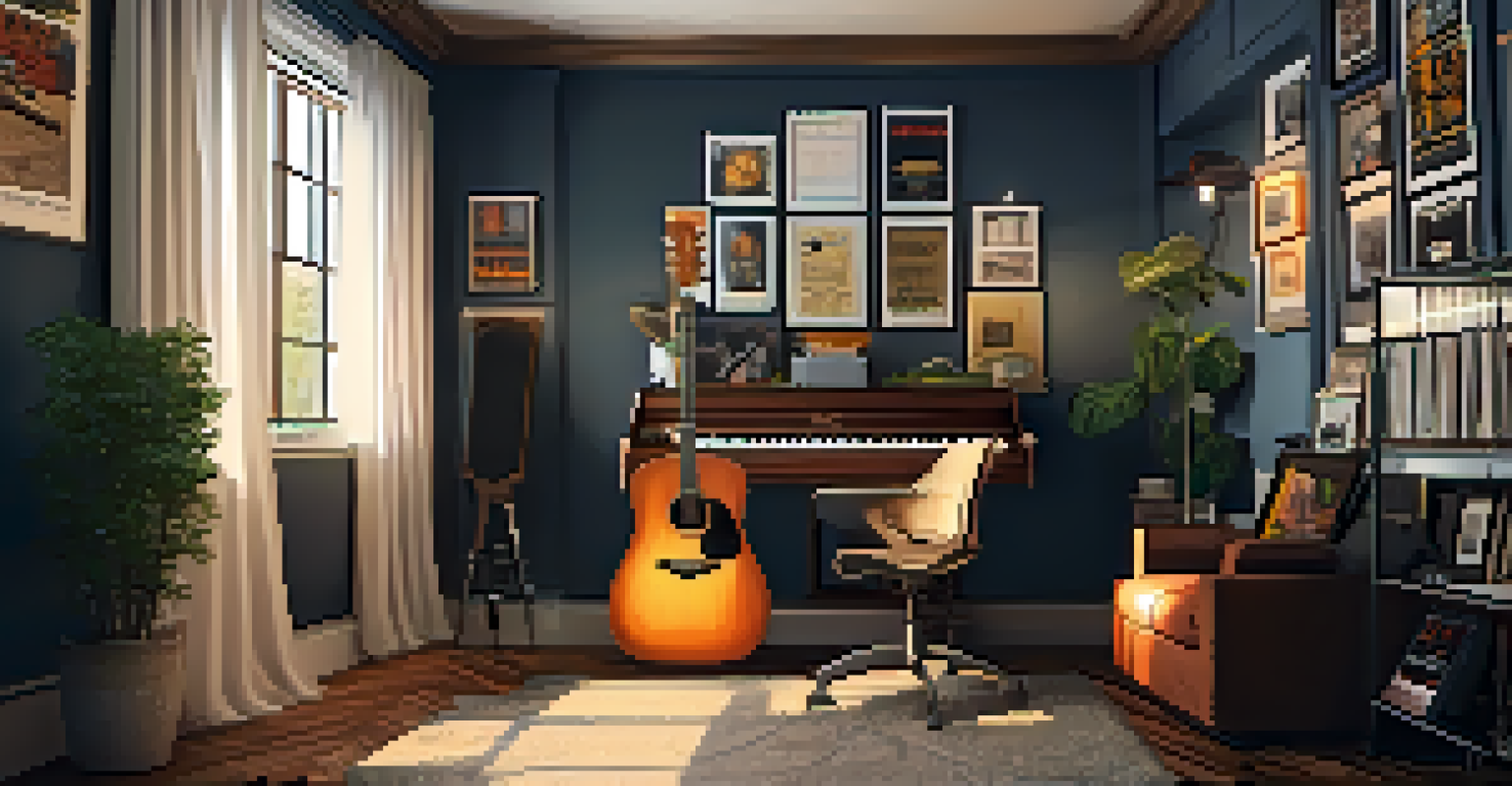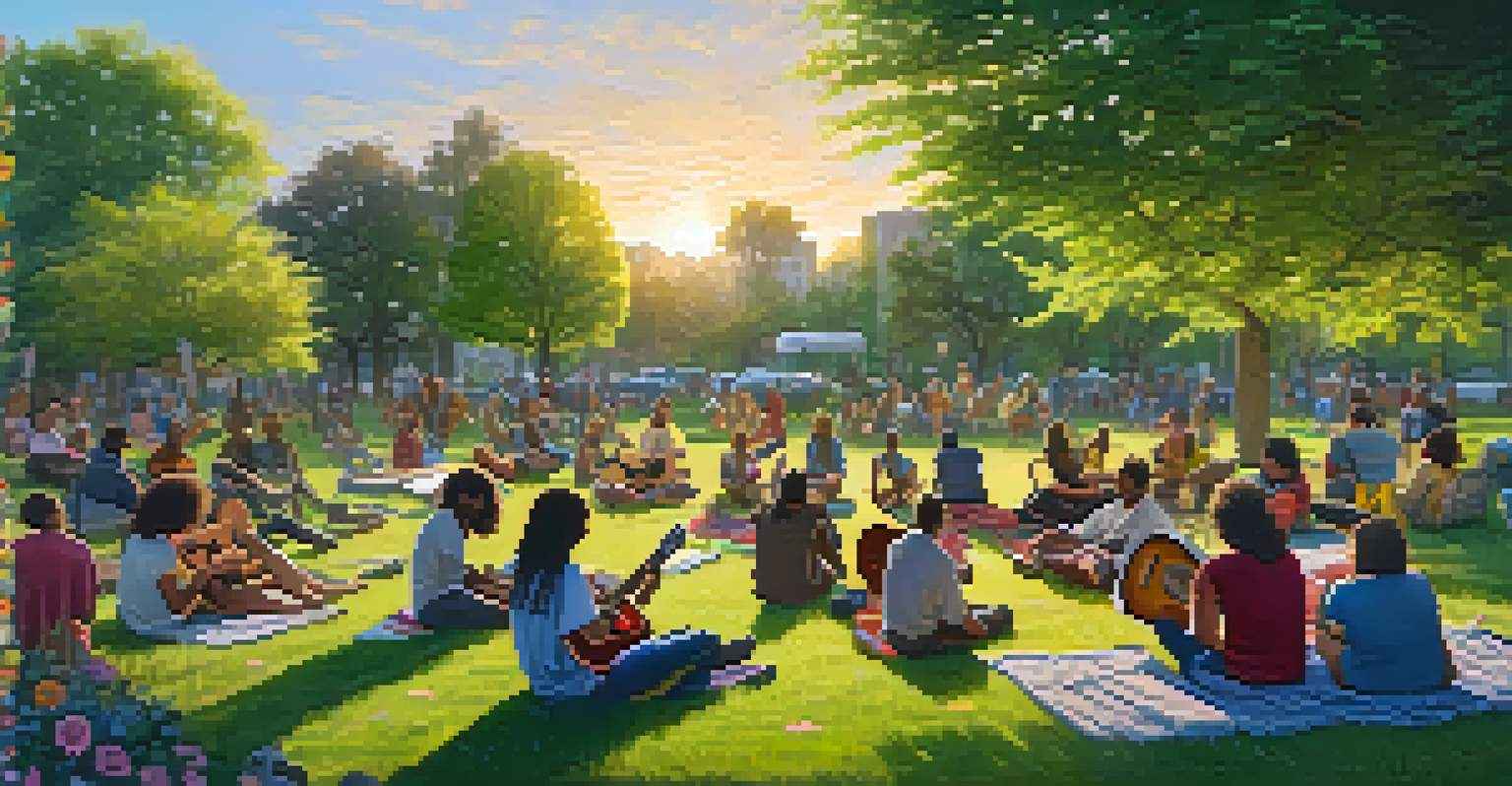Tips for Beginners: Reading Guitar Tablature with Ease

Understanding the Basics of Guitar Tablature
Guitar tablature, often called 'tab,' is a visual representation of music specifically for guitar players. It uses numbers and lines to indicate where to place your fingers on the fretboard. Unlike standard sheet music, tablature is much easier for beginners to grasp since it directly relates to your instrument.
The guitar is a miniature orchestra in itself.
Each line of tab corresponds to a string on your guitar, with the bottom line representing the lowest string (the thickest one). When you see a number, it tells you which fret to press down on that string. For instance, a '2' on the bottom line means you should press the second fret of the low E string.
Understanding these basics will help you feel more comfortable as you start reading tab. As you progress, you'll find that recognizing the patterns and symbols becomes second nature, paving the way for more complex pieces.
Familiarizing Yourself with the Tablature Layout
A typical guitar tab consists of six horizontal lines, each representing a string. Above the lines, you may find additional symbols indicating techniques like bends, slides, or hammer-ons. Familiarizing yourself with this layout will make reading tabs more intuitive.

For example, if you see a 'h' on the tab, it signifies a hammer-on. This means you'll pluck a note and then 'hammer' your finger down on a higher fret without picking again. Understanding these symbols is crucial for playing the music as intended.
Learn Guitar Tablature Basics
Understanding the fundamentals of guitar tablature helps beginners ease into reading music specific to their instrument.
Take some time to study different tabs and their layouts. The more you practice, the easier it will become to interpret the information at a glance, enhancing your overall playing experience.
Learning Common Guitar Techniques in Tablature
Tabs often include various guitar techniques that can add flair to your playing. Techniques like bends, slides, and pull-offs are essential for creating expressive melodies. You'll find symbols in the tab that indicate which techniques to use, so pay attention to these details.
Music is the shorthand of emotion.
For instance, a 'b' indicates a bend, which means you'll push the string up to reach a higher pitch. Conversely, a '/' or '\' indicates a slide, where you glide your finger up or down the fretboard. Mastering these techniques will not only improve your playing but also make it more enjoyable.
Start with basic techniques before moving on to advanced ones. As you become more comfortable, you’ll find that integrating these techniques into your playing will enhance your musical expression.
Practicing with Simple Songs to Build Confidence
One of the best ways to get comfortable with reading tablature is to practice with simple songs. Choose well-known tunes that you enjoy, as they will keep you motivated. Many beginner guitar tabs are available online, often for free, covering a wide range of genres.
Start slowly, focusing on one measure at a time. Break the song into manageable sections, and practice each part until you feel confident before moving on. This step-by-step approach will help you build both your reading skills and your playing technique.
Practice Simple Songs Regularly
Starting with familiar, simple songs allows new guitarists to build confidence and improve their tablature-reading skills.
As you progress, you can gradually increase the complexity of the songs you choose. This not only boosts your confidence but also keeps your practice sessions fresh and engaging.
Utilizing Online Resources and Tools for Learning
The internet is a treasure trove of resources for learning how to read guitar tablature. Websites, apps, and YouTube channels offer instructional videos, tutorials, and even interactive tabs that can enhance your learning experience. Don't hesitate to explore these tools!
For instance, platforms like Ultimate Guitar and Songsterr provide an extensive library of tabs for various songs, complete with user ratings. This way, you can find reliable tabs and learn from others' experiences. Additionally, many apps offer features like tempo adjustment, which allows you to practice at your own speed.
Take advantage of these resources to supplement your learning. The more tools you have at your disposal, the more effective and enjoyable your practice sessions will become.
Setting Realistic Goals for Your Tablature Journey
When learning to read guitar tablature, it's important to set realistic goals. Start with achievable targets, like mastering a simple riff or a short song, to avoid feeling overwhelmed. This approach helps build your confidence and keeps your motivation high.
As you accomplish these smaller goals, gradually increase the complexity of your targets. For example, once you can play a simple melody, challenge yourself with a song that includes more intricate techniques or faster tempos. This incremental progress will help you grow as a musician.
Join a Guitar Community for Support
Engaging with a community of guitarists can provide valuable resources, encouragement, and motivation throughout your learning journey.
Remember, learning an instrument is a journey, not a race. Enjoy each milestone along the way, and you'll find that your skills improve naturally over time.
Joining a Community to Enhance Your Learning Experience
Joining a community of fellow guitarists can significantly enhance your learning experience. Whether it's an online forum, a local guitar class, or a social media group, sharing your journey with others can provide support and encouragement. You might even make some new friends along the way!
These communities often share tips, resources, and feedback, which can be invaluable as you learn to read tablature. You can ask questions, seek advice, or even share your progress for constructive criticism. Engaging with others can also expose you to new techniques and styles.

Participating in a community can keep your passion for guitar alive. The camaraderie and shared experiences will motivate you to continue practicing and improving your skills.